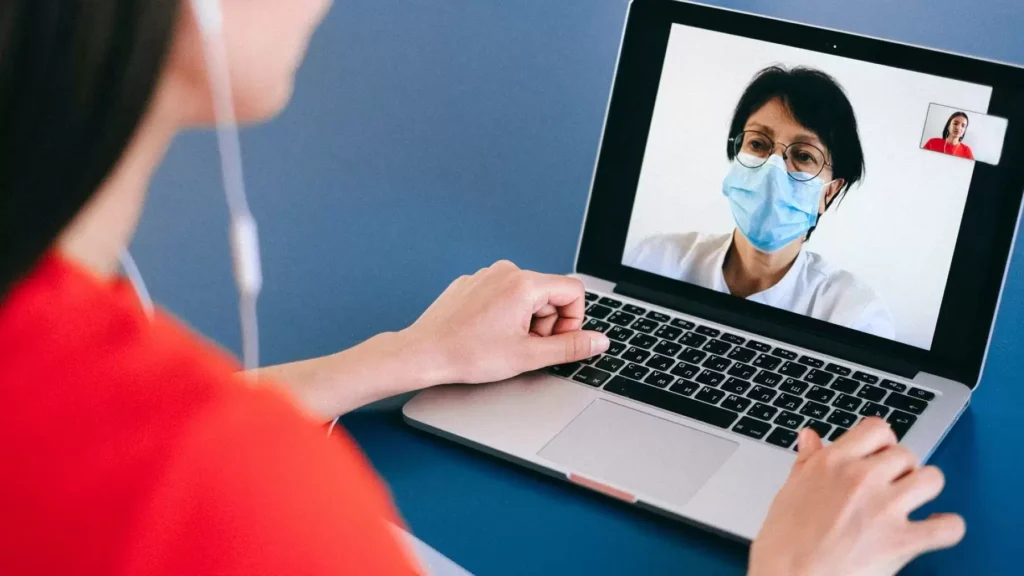Telehealth use rapidly increased in the early months of the pandemic, fueled by an unprecedented expansion of coverage and reimbursement by health insurers. Because these changes were a response to the COVID-19 public health emergency, they were intended to be temporary. They may not stay temporary, however, as stakeholders, from government to health insurers, weigh whether and how to make the current flexibilities a permanent part of health care in the future.
Today telehealth is at the center of health policy discussions, but many questions remain unanswered. Will the emerging research on telehealth and health outcomes align with public perceptions of telehealth? How will this research be used to inform the types of visits — in-person or virtual — people have with their doctors? And, fundamentally, do we have enough information even to determine which type of visit is best when choosing between telehealth and in-person care, particularly when it comes to mental health care? Of course, there is no one-size-fits-all answer and flexibility must be a central component of any path forward. As Congress and the Biden Administration examine which path to take, they should consider an approach that uses telehealth as an option that complements — but is not a replacement for — in-person care.
Face-to-face visits should remain an essential part of health care for many people who benefit from being seen in-person by their doctor. This is especially true for diseases and disorders where physical exams are critical for screening, diagnosis and treatment. People with involuntary movement disorders, like tardive dyskinesia (TD), fall into this group. TD is a condition usually caused by prolonged use of antipsychotic medications by those with serious mental illness. For people at high risk of TD, the American Psychiatric Association’s guidelines recommend physical screening for the condition occur at least every six months so that doctors can note even minor changes in movements.
With telehealth, there are substantial limitations on a doctor’s ability to conduct a thorough physical exam: some changes may not be noticed over telehealth, where video quality or the inability to see a person’s full body can hinder a doctor’s evaluation. This means that the use of telehealth without periodic in-person appointments can lead to missed or inappropriate diagnosis, and potentially incorrect treatment. In fact, experts in the field of movement disorders argue telehealth is not a substitute for face-to-face visits, but rather a helpful addition to clinical care.
Clinical experts also note telehealth can impact a person’s ability to provide a full medical history and make it harder for people to form doctor-patient relationships that make care more empathetic and conversation more honest. Similarly, although many psychiatrists indicated they were “pleasantly surprised” they could meet a person’s needs via telehealth, the majority indicated a strong preference to return to in-person care following the pandemic for various reasons that include the need for privacy and building an effective doctor-patient relationship.
The patient voice is a critically important part of the conversation about access to and quality of health care. A leading coalition for people living with chronic diseases argues the “appropriate use of telehealth services requires a balanced approach and should be based on patient preferences, needs and goals.” These advocates also note telehealth should be used with, not instead of, face-to face visits, and patients and providers should together determine the best setting — virtual or in-person — to achieve health care goals.
Where does this leave Congress and the Biden Administration? Clearly, post-pandemic telehealth policies must be flexible enough to support the unique needs of all people — those who may receive the care they need via telehealth, and those who need at least some in-person care. Telehealth policy should protect in-person visits as an essential part of health care moving forward, so everyone has access to care that meets their preferences and needs.
***
Leslie Lundt, M.D., is an internationally recognized clinician and educator in the neuropsychiatric field. She is board-certified in psychiatry and has over 30 years’ experience in active clinical and research practice. Dr. Lundt is also Executive Medical Director at Neurocrine Biosciences.


